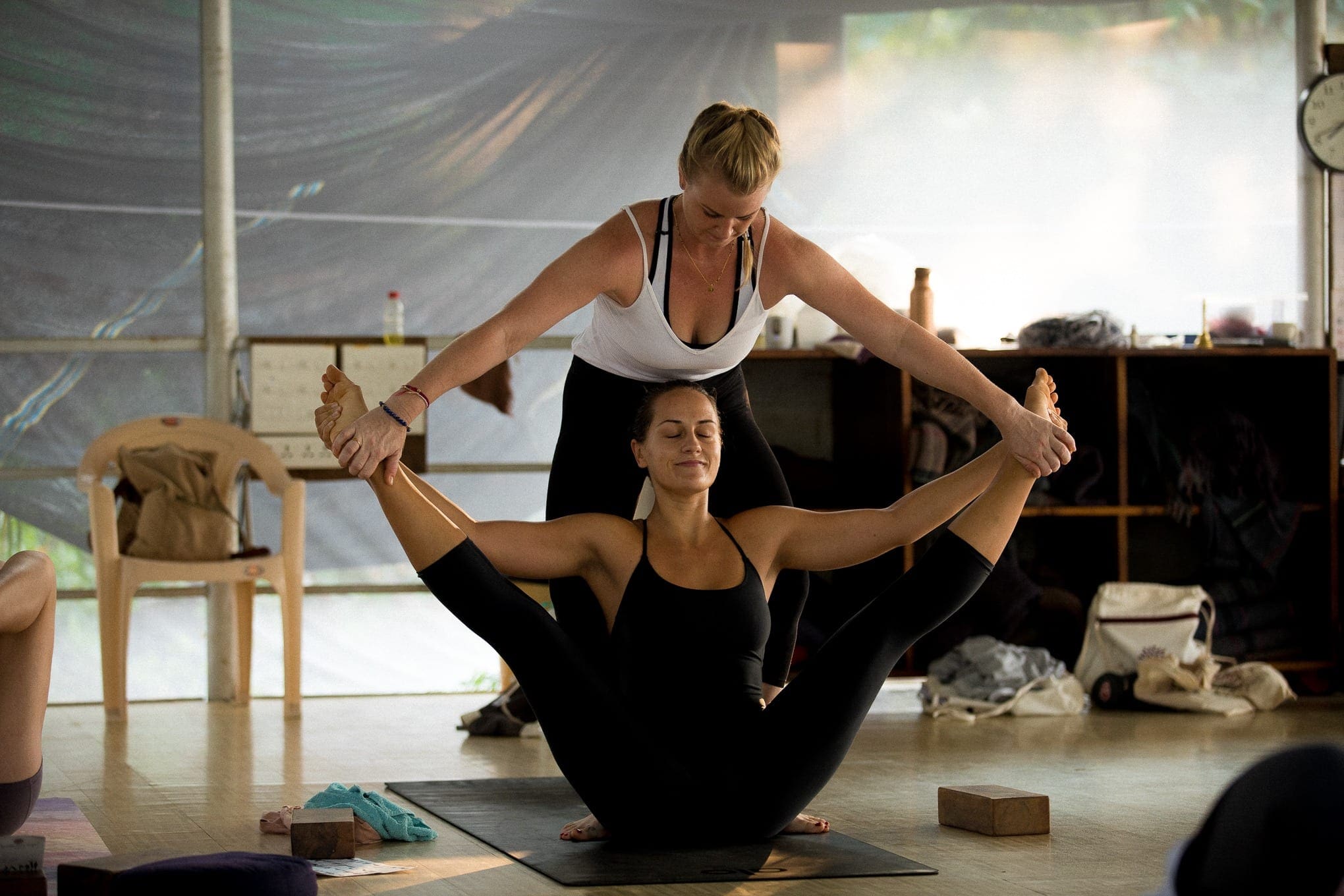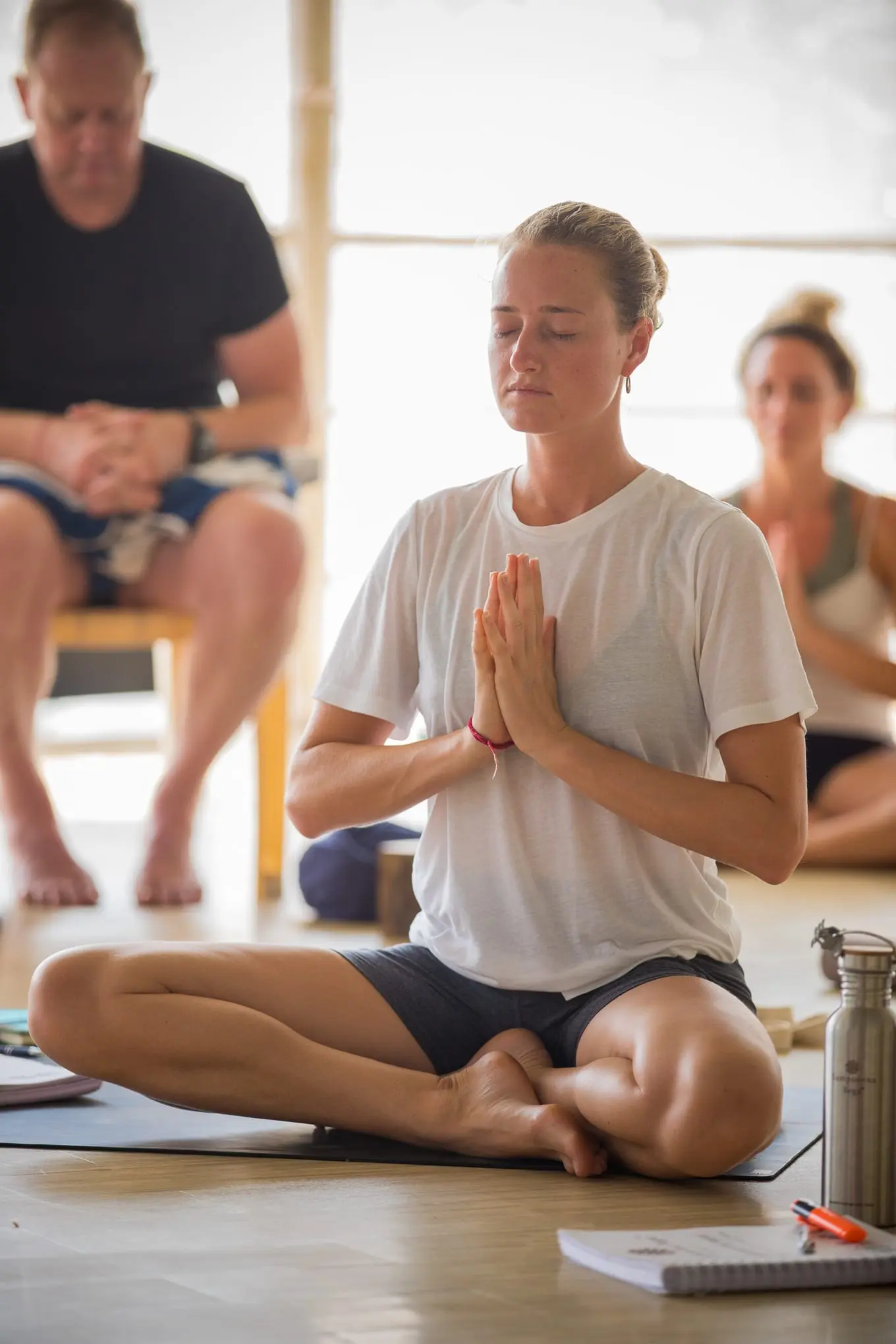How to Choose the Yoga Teacher Training that’s Right for You
If you are contemplating yoga teacher training then you’ve probably been practising in a certain style for at least a little while, and been happy enough in that style of yoga to seek further knowledge about it, or at least want to know more about the principles behind yoga in general.
Choosing a style of yoga for your yoga teacher training is a bit like choosing your degree subject after your high-school certificates. Perhaps you go for something you were good at at school which will give you a sense of familiarity and fluency on a new course, or you may choose something you’ve been interested in outside your main area of study so far and you want to launch yourself into something completely new.
Before we explore the different avenues of yoga, it’s wise to remember that a 200-hour yoga teacher training course is just the beginning of your yoga teacher training. You may start off in the style you’re most familiar with but during your course feel inspired by another style you’ve newly discovered. Yoga teacher training is all about self-discovery and part of that is discovering the path you truly want to take forward.

Vinyasa Flow
This is currently a very popular style of yoga, and one of the most modern. It refers to a style that combines movement with breath and features flowing sequences between one asana and another. If you come from a dance background like me, it’s the one that speaks to you the most. The word vinyasa, which can be translated as “arranging something in a special way”, can be applied to a number of the styles discussed below, such as Ashtanga or Jivamukti, but in recent times, Vinyasa has become its own category, complete with its own asana language, such as natarajasana (dancer’s pose), pigeon or three-legged dog pose.
When I came to my own 200-hour YTTC at Sampoorna – Yoga Teacher Training School in Goa, India Vinyasa was combined with Ashtanga, but I was very much here for the former. I was surprised to discover that Vinyasa is founded on the basis of the much more ancient Hatha or Ashtanga yoga practice, and it was enormously beneficial to have that grounding paired with the more modern style. Now I enjoy both styles for very different reasons.
Ashtanga
This is a precise series of poses linked by breath and sequential ‘vinyasas’ (chaturanga, upward-facing dog, downward-facing dog), as prescribed by the yoga master, Pattabhi Jois, who in turn was taught by Krishnamacharya in Mysore, India. It’s known to be one of the most dynamic and demanding of all yoga styles, popular in the west for its ‘work-out’ qualities. The series of asanas is intended to build heat and energy flow, and designed to purify the body. (In the US in the ‘90s, Ashtanga was given a western spin when it was called Power Yoga.)

If you prefer a more intensely physical practice, this could be the YTTC for you, but be prepared for the onslaught on your body. Many students start off pushing themselves too hard at the start of an Ashtanga YTTC and experience burn-out by week three. Take it slowly and you’ll be fine. You will love learning about the ‘eight limbs’ (ashtanga) of Sage Patanjali’s Yoga Sutras which cover a whole moral and ethical framework for living, plus asanas, pranayama (breath) and meditation.
Jivamukti
Based on Ashtanga, this is a 1980s, US-founded style of yoga that combines Jois’ asanas with chanting, meditation, readings and music. The New York-based headquarters releases monthly themes for teachers around the world to follow. If you like Ashtanga but feel like breaking out of the primary series sequence, then this may be the practice for you. I practiced it at the London HQ and came to love the spiritual energy there.
Hatha
For most people, especially under a certain age, Hatha Yoga means a slow, steady, quiet practice, without the ‘workout’ benefits of a more dynamic style of yoga, such as Ashtanga or Vinyasa. But when I asked one of the teachers at Sampoorna how they would describe Hatha, they said this: “With Hatha, the two words to have in your mind are ‘authenticity’ and ‘clarity’. Hatha is the mother of all yoga. It is the origin – the source of all the other yoga ‘streams’: ashtanga, vinyasa, rocket, hot yoga … they all come from Hatha and they are simply modifications of the original practice.”
Hatha is not just about asana, it also includes a system of pranayama (breathing techniques), mantra-chanting, mudras (hand gestures), shatkriyas and shatkarmas (cleansing techniques) and some visualisation practices. It’s a beautifully holistic approach to yoga that is intended to balance the mind and the body between its two halves, with ‘ha’ representing the sun (and the right side of the body – the ‘Ida’) and ‘tha’ representing the moon ( the left side – the ‘Pingala’). The goal of Hatha yoga is to unite, or balance these two energies in the central energy channel or ‘nadi’ of the body – the ‘Sushumna’ (located in the spine).

If you want to get to grips with the origins of yoga, look no further than Hatha, which is gaining in popularity as people look for, rather ironically, more mindful ways of practicing yoga.
Iyengar
Like Hatha, Iyengar is a very precise, slow practice with asanas being held longer than in other styles. Practitioners use props including blocks, bolsters and straps to adapt poses to their own physical needs and focus on precision in muscular and skeletal alignment. As someone who is (currently) unable to adopt the full expression of many of the Ashtanga poses without props, I am practicing a form of Iyengar by default and it’s made me more interested in following that up if I ended up doing more training. However, the criteria for teaching is very strict so it may be more difficult to find a course – it has its own system of certification outside the Yoga Association.
Kundalini
If spirituality is more your thing, then Kundalini Yoga might be for you. In the 1960s, Yogi Bhajan’s philosophy of everyone’s right to be “healthy, happy and holy” began to help people tap into their greater potential. The focus is on the body’s seven ‘chakras’ (energy centres), and the practice starts by awakening the energy at the base of the spine (muladhara or root chakra) and then drawing it through the whole body via the other six chakras. The whole Kundalini practice includes asanas, pranayama, chanting, and meditation.
My own yoga journey began with a very good Kundalini teacher whose blending of spiritual teaching and asanas happened to hit my yoga spot. Whichever YTTC you choose, you will find a path to the right one eventually. Trust the process.
Lisa Edwards is a freelance writer, editor and certified yoga teacher, who completed her 200-hour yoga teacher training at Sampoorna Yoga school, Goa, India, in 2019. Sampoorna Yoga courses – RYT-200, RYT-300 and RYT-500 – are registered with Yoga Alliance, USA.
YOGA ALLIANCE REGISTERED YOGA TEACHER TRAINING COURSES

Sampoorna Yoga Teacher Training School has been a registered international yoga school with Yoga Alliance, holding RYS-200, RYS-300, RYS-500, and YACEP designations since 2009. Its online and in-person Yoga Teacher Training Courses and Certifications are recognized and accepted worldwide, enabling all graduates to teach globally. Upon course completion, participants receive a 200-Hour, 300-Hour, or 50-Hour Yoga Teacher Training Certification, allowing registration as RYTs (Registered Yoga Teachers) with Yoga Alliance. Our Yoga Teacher Training Certificate Courses empower you to teach legally in any country, whether you choose to register with Yoga Alliance registration or not.

